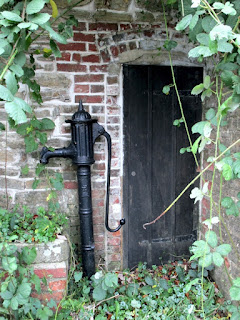
For the first time, over the last couple of years, I’ve had
occasions for using the Authorised Version of the Bible liturgically, for small
celebrations of Evensong at Corpus Christi, for instance. It seemed odd to be
using the Prayer Book language for the liturgy alongside a modern Bible
translation for the readings, so I brought the two into line. In the past I’ve
recognised the greater ‘creative ambiguity’ of some passages in the old text as
opposed to modern translations, but reading the AV text aloud in the context of
a liturgy that fits it was a different experience. Being forced to try to read
it in a way which made it make sense, with the natural rhythms of speech,
intensified my relationship with the text, which is of course the Word of God
(however we understand that phrase). I can see the point, then, for using this heightened
language – especially for the Gospel, though it may make the already-complex formulations
of some of St Paul’s letters positively clotted.
The argument that comprehension doesn’t matter,
though, takes the case too far. The theory is that worshippers don’t really need
anything more than the overall sense of what is happening in the liturgy, which
becomes the backdrop for their separate devotions, built into their spiritual reflections.
But what shapes those reflections?
My first regular place of worship was a ‘Prayer Book Catholic’ church where,
although a little red copy of the BCP was thrust into your hand when you arrived,
the liturgy bore little relation to anything in it. That didn’t matter too
much, because I knew what was supposed to be happening. But, to work, that approach
has to rest on a bedrock of serious catechesis, and on people reading their Bibles,
studying their mass books, and saying their prayers at home. We know that worship
comes from the Holy Spirit, almost regardless of words and languages, but the
Holy Spirit still needs something to work with. Otherwise, other considerations
and thoughts will fill the void: self-congratulation at being a reactionary Catholic,
perhaps.
I suppose the real question is over what shapes the mind of the
Church. How far can a society far removed from the kind of basic familiarity
with Christian culture that can decode liturgy manage when faced with archaic language;
when – for instance – confronted with a chanted AV reading of John 2, can it
bring readily to mind the imagery of a wedding, water jars, and a startled bridegroom?
I can, but can a single mum straight from the bus stop of Swanvale Halt?












































